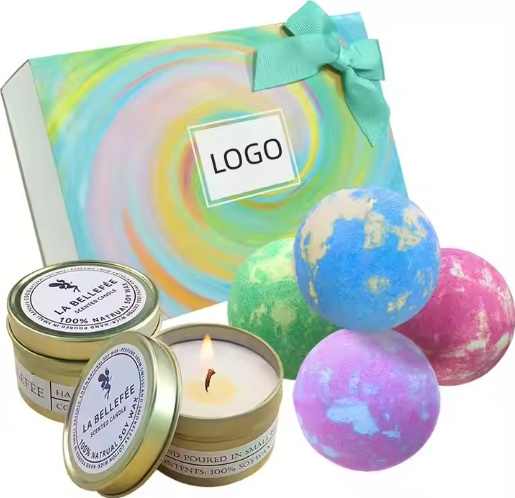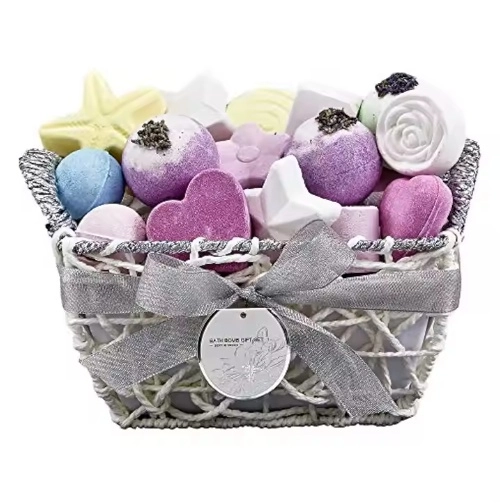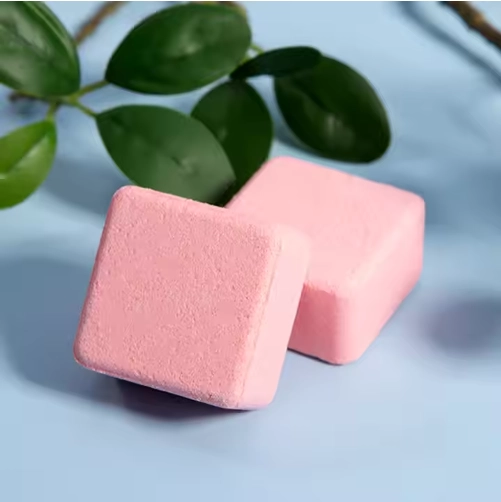What is a Bath Bomb?
Bath bombs, also known as bath fizzers, are dry ingredients designed to effervesce once in contact with warm water. Once they hit the water, they release Essential Oils, scents, colors, and bubbles to elevate your bath experience. Bath bombs can help condition the skin and soothe sore muscles. Additionally, they may help detoxify and relax the body and mind.
Ingredients:
- Baking soda
- Citric acid
- Epsom salts
- Fragrance oils
- Colourants
- Surfactants
How Does it Work?
The “bomb” aspect of a bath bomb is the fizziness. But what’s going on in those spheres that make them so fizzy? Two of the key ingredients to a bath bomb are citric acid and sodium bicarbonate. You might also know sodium bicarbonate by its more common name, baking soda. These two ingredients are what cause the impressive and delightful fizz when the bath bomb enters the water.
When sodium bicarbonate (NaHCO3) comes in contact with water, the sodium (Na) molecules break off from the bicarbonate (HCO3). At the same time, the citric acid is dissolving, with a single hydrogen ion (H+) separating from the rest of the molecule. When the released hydrogen ion from the citric acid encounters the bicarbonate from the baking soda another reaction happens! This time, carbon dioxide (CO2) gas is released as one of the end products. The carbon dioxide forms bubbles in the soap and bath water and rushes to the surface with a delightful fizz.
Does Bath Bombs Expire?
As with food products, bath bombs have ingredients with an expiration date and a recommended shelf life. The shelf life of bath bombs refers to how long they can be stored without losing their full effectiveness. An average bath bomb has an average shelf life of about six months.
Common bath bomb ingredients include citric acid and sodium bicarbonate (baking soda). While baking soda and citric acid both have long shelf lives, citric acid starts losing its potency as time passes. However, you can easily preserve the potency of the citric acid by storing it in a tightly sealed container.
When exposed to water or moisture, bath bombs tend to create an acid-base reaction. If they are exposed too much to the moisture in the air, they might not fizz anymore and begin to lose their effective properties.
The fresher your bath bomb is, the faster it fizzes and the better it works. You can store your fizzies in tight bulk bath bomb containers for a long time, and they'll still be usable, but they cannot work effectively compared to fresh ones.

How Do You Tell If A Bath Bomb Is Expired?
Figuring out if your bath bomb has expired can be tricky. Unlike food items, cosmetics don't always have clear expiry dates printed on the packaging. However, there are a few telltale signs that indicate your bath fizzy may be past its prime:
Scent - A bath bomb that gives off an unpleasant or chemical odour is likely old and expired. If it smells rancid instead of its intended fragrance, it's best not to use it.
Lack of Fizz—Bath bomb ingredients like baking soda and citric acid lose efficacy over time. An expired bath bomb won't react as strongly when placed in water, so if yours fails to fizz much or at all, its freshness is questionable.
Change in Color - Fading, dullness and discolouration happen naturally as bath bombs age. If yours looks significantly different shade-wise from when you first bought it, its time may be up.
Mold Growth - Mold and mildew can grow on old bath bombs, especially ones with natural additives like milk, oats or flower petals. This poses health risks, so mouldy bath bombs should not be used.





